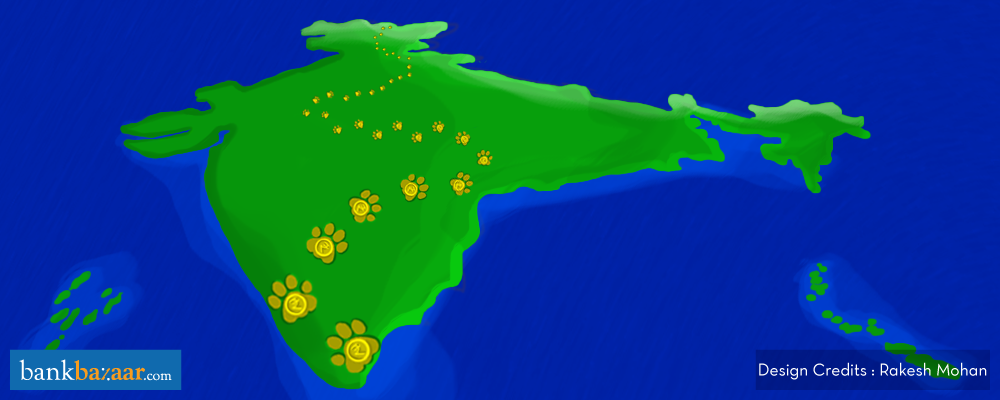
Where it all began
Did you know that the central bank of our country came into existence only in 1935? The Reserve Bank of India was established on 1st April 1935 when the British were still ruling the country. It was founded under the Reserve Bank of India Act, 1934. Initially, it was held privately by 100 people. Later, it was nationalised on 1st January 1949.
What’s going on and who’s in charge around here?
The RBI is the central bank of India and helps determines strategies for the growth of the country. It compromises of a 21 member committee. These members are known as the Central Board of Directors including the Governor, Deputy Governors, representatives from the Indian Finance Ministry, Government nominated representatives from important industries of the economy and directors representing local boards (these directors generally have the interests on co-operative banks in mind). At present, the Governor of the RBI is Raghuram Rajan, who is an economist. The Deputy Governors include S. S. Mundra, H R Khan, R. Gandhi and Urjit Patel.
So, just what does the RBI do exactly?
The RBI is like a strategic advisor to the Government and plays a major role in determining how the economy performs. It takes a number of decisions that have an impact on the growth of the economy, inflation, currency circulation, among others. Some of the most important functions are:
Controlling financial institutions
(So that everybody toes the line)
As you might already know, the RBI plays a major role in devising guidelines for banks and other financial institutions. For this purpose, the RBI has set up a board called the Board of Financial Supervision (BFS). This is a Committee of the Central Board of Directors (CCBD) established in November 1994 for the sole purpose of controlling financial institutions in the country. Which institutions come under the purview of this board? All commercial banks, Non-Banking Financial Companies (NBFCs) and other financial institutions in the country.
The BFS has four members who have a term of two years and the Deputy Governors of the RBI will act as ex-officio members of the board. The BFS has three major departments. One is the Department of Banking Supervision, another is, of course, the Department of Non-Banking Supervision and the third is the Financial Institutions Division. The BFS meets once a month to inspect reports and issues brought to its notice by the departments under it. The BFS also looks at improving the quality of audits in banks and other financial institutions.
Regulator of the financial framework
(The Big Boss of the banking world)
The RBI lays down the framework on which banking operations are carried out. The main objective of this function is to ensure that the banking system functions well, that it protects depositors’ money and also to ensure that banks provide cost-effective services to their customers. To further this cause, the RBI created the Banking Ombudsman to address complaints of bank customers. The RBI also lays down the rules for capital adequacy of banks. Banks, of course, approach the RBI for help during emergencies.
Issue of Currency
(Money, Money, Money!)
We all know that the RBI Governor’s signature is on every currency note that is printed in India. The RBI prints notes and issues coins and also destroys them, if they are not fit to use. The objective is to maintain an adequate money supply in the country and also to ensure that the credit system in the country is working well. The RBI also needs to ensure price stability while maintaining economic growth. Do you know that the RBI also handles the reserves of the country? It maintains reserves such as the Foreign Currency reserve. It acts as a regulator of foreign exchange, especially when the value of the rupee is threatened. The RBI also holds the cash reserves that banks in the country deposit with the central bank. Essentially, the RBI maintains the accounts of banks in India. It enables the inter-bank transfer of funds. No wonder, it is called the banker of bankers. This brings us to the next function.
Controlling Credit
(Keeping things in check)
The RBI plays a major role in controlling credit in the country through tweaks to the interest rates in the country. And interest rates affect inflation. Inflation, in turn, determines the growth of the country. So, the RBI pretty much decides how the economy grows. In order to do this, it controls three rates:
- One is the bank rate – This is the rate at which commercial banks borrow money from the RBI. What happens when this is tweaked? A fall in this rate will increase the money supply in the country.
- Then there is the Cash Reserve Ratio (CRR). This indicates how much money commercial banks need to keep with the RBI as a reserve. An increase in this ratio will decrease the money supply.
- The third one is the Statutory Liquidity Ratio (SLR). A higher ratio will have an anti-inflationary impact.
This is only what the RBI does, broadly. In reality, the RBI does much more. In fact, it plays a big role in steering the economy in the right direction. Raghuram Rajan has played his part and that is why you are enjoying lower interest rates on your loans as well as low inflation today.
What is the procedure to recover the money transferred under RTGS/NEFT to fictitious account holder U/s 420, 34 of IPC and the receivers bank is not providing the details to the investigating police?
Hi Walter N A Nazareth,
You can check with your bank to see if they can reverse the payment and debit the incorrect account the money was transfered. We suggest to take this matter up with your legal counsel in case you are unable to get the funds back.
All the best!
Cheers,
Team BankBazaar